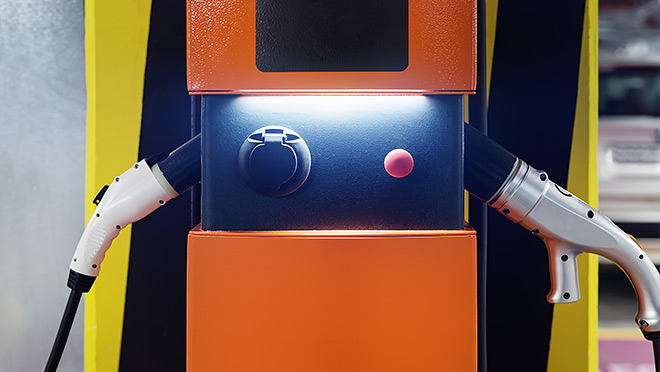Industry trend series: The future of EV charging is smart

Alliance members urged to offer solutions to charging for multi-unit buildings
By the time the Vancouver Canucks make another long playoff run – let's be optimistic and say 2021 – there will be an estimated three to four times as many electric vehicles on B.C. roads as there are today. When Elias Pettersen leads the team to their first Stanley Cup – ready for the parade in 2023? - there will be more than 100,000.
By 2023, electric vehicle charging stations won't be a novelty. They'll be a customer expectation, with thousands installed in underground parking lots of new buildings, at least in Richmond and Vancouver, where all multi-unit residential buildings constructed from now on are required to include charging stations in every stall.
That adds up to a lot of potential work for Alliance members. So it wasn't surprising that one of the hot topics of February's Industry Trend Series on electric vehicles was charging stations in condo buildings.
That led to a discussion where there were far more questions than available answers, as these are the early days of EVs. It also prompted an invitation from session presenter Alec Tsang of BC Hydro for Alliance members to help solve issues ranging from how buildings can manage the extra load as vehicles plug in, to how customers could be charged for use of the chargers.
"There will be more electrical work for the initial install of these chargers, but that's only part of it," says Tsang. "Some contractors will provide more service-based solutions rather than just asking for the specs and then doing the work. I think that as local governments put in EV charging requirements, it will create a need for these service providers – from contractors to engineers – to come up with new solutions."
Load management could be the secret sauce to keeping costs down
The nightmare scenario is that people move into a new building and immediately plug in so many cars, at the same time, that the added load is beyond the capacity of the building's electrical service. Tsang says the old-school way to handle this would be to automatically upgrade a building's service, to also upgrade BC Hydro's feeder distribution lines and – in a neighbourhood riddled with new buildings and thousands of EV-enabled parking spaces – to upgrade the local substation as well.
That's all really expensive, and unnecessary, according to Tsang.
"We would take a more common sense approach," he says. "We know that 100% load from those parking stalls isn't going to be there for a long time to come. It will grow gradually, so we'd plan accordingly. At BC Hydro, we might set things up for extra conduits to the building, but we wouldn't actually connect those to the building until the load gets closer to that."
Meanwhile, the building operators could be faced with a costly upgrade to their electrical service, such as doubling a building's service to prepare for the addition of EV charging. Or they could avoid a major upgrade by instituting a load management strategy that would limit the amount of EV charging that's being done at any given time.
Tsang says a building control mechanism – he likens it the "brain" – could be set up to monitor when EV charging is pushing a building near its load limit. Before it hits the limit, the controller could ratchet down the charge rates for vehicles plugged in.
"Once you start reaching the limit of your service size, the system could start managing the charging station to limit charging," he says. "You could either do that equally, or you could have technology that looks into battery capacity of each car charging and says, this one is almost full, so we can shut down charging on this one, while this one just started and will get more."
A few facts and updates from the Industry Trend event on EVs
Tsang's presentation to Alliance members included a number of updates and trends in electric vehicles including:
- In 2018, 15% of passenger vehicles sold in B.C. were electric.
- While the number of EVs on B.C. roads was just over 17,000 in 2018, projections are for 20 times that number by 2028.
- A Bloomberg New Energy Finance analysis predicts that, driven by the decreasing cost of batteries, the cost of electric vehicles will be at par with gas-powered vehicles by 2024.
- Ultra-fast charging technology has arrived, with Tesla operating stations with 12 charge ports at 120 kW (compared to the usual fast charger rate of 50 kW). Tesla introduced earlier this spring a charger at 250 kW. Electrify America [PDF] says it plans to install, or have under development, 484 charging stations in the U.S. featuring more than 20,000 ultra-fast chargers (150 kW to 350 kW) by July 0f 2019. Half a dozen Electrify America stations are planned for B.C. this year.